Must-See 10 Paintings at the Uffizi Gallery
Icons of Renaissance and Baroque art
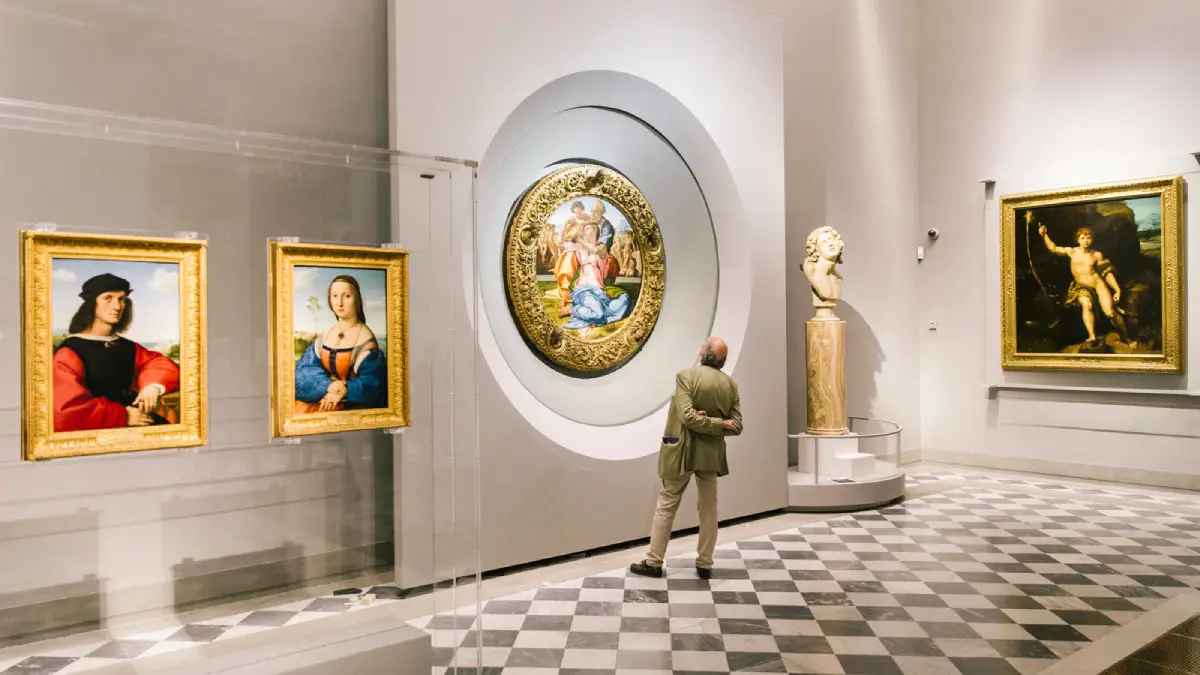
The Uffizi Gallery in Florence is home to some of the most iconic paintings in art history.
From Botticelli’s The Birth of Venus to Caravaggio’s Medusa, each masterpiece offers a window into the evolution of European art, from the Gothic and Renaissance periods to the dramatic flair of the Baroque.
If you’re an art lover or a curious traveler, these 10 must-see paintings will guide you through the rich legacy of Italian painting and the visionaries who shaped it..
The Uffizi Gallery attracts over 3 million visitors annually, so booking in advance is a smart move. The Skip-the-Line ticket is the most popular and budget-friendly option. The Guided Tour ticket includes expert insights, while the Small Group Tour offers a more personal experience with fewer people.
Nascita di Venere (Birth of Venus)
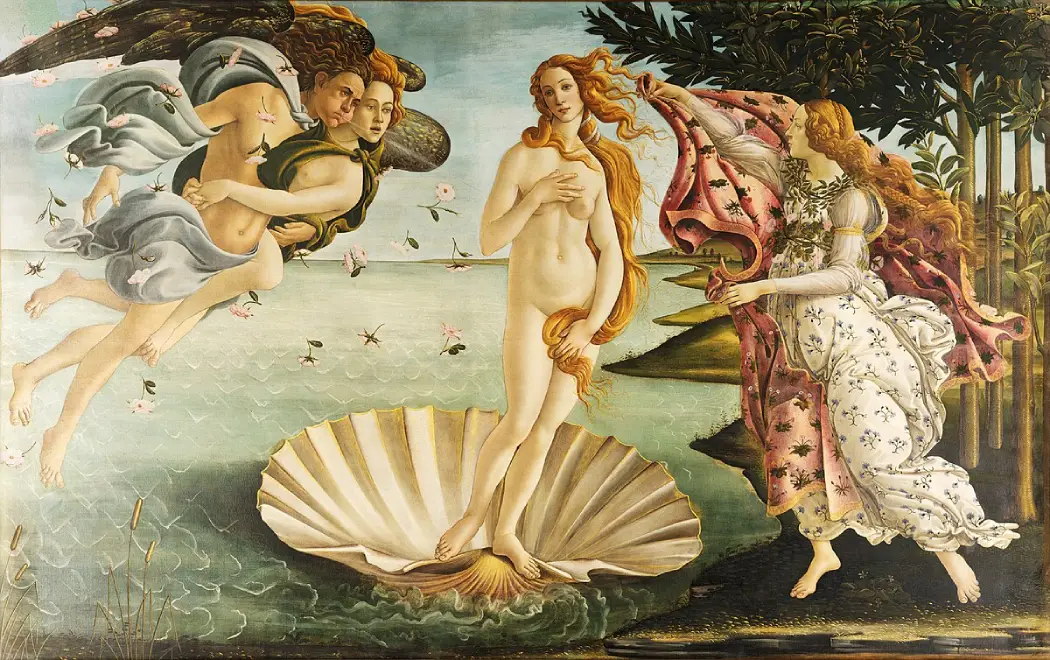
Artist: Sandro Botticelli
Year: Between 1482 and 1485 or 1486
In rooms #10–14 at the Uffizi, near Primavera, Botticelli’s The Birth of Venus shows the goddess rising from the sea on a shell, guided by the wind gods, Zephyrs. With soft pastels, radiant skin, and flowing lines, the painting has a dreamlike elegance. Inspired by classical mythology, it reflects the Renaissance embrace of humanism and the idealized beauty of the human form.
Annunciazione (Annunciation)
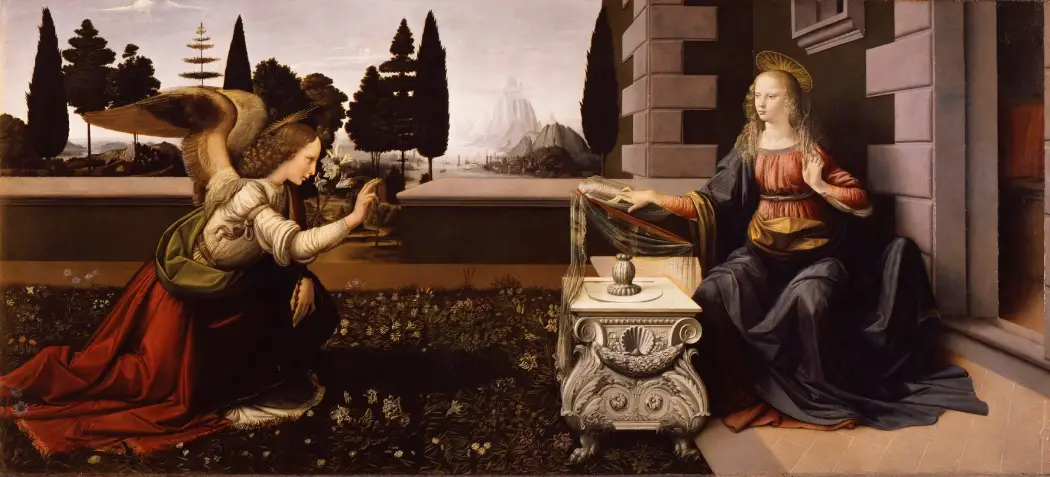
Artist: Leonardo da Vinci
Year: c. 1472–1475
In Leonardo’s room at the Uffizi, The Annunciation (1472–1475) captures the moment the Angel Gabriel appears to Mary. Set unusually in an outdoor scene, it reflects Leonardo’s early innovation. Painted while still an apprentice in Verrocchio’s workshop, the work already shows his emerging style, especially in the angel’s serene expression, reminiscent of the Mona Lisa. Nearby, his unfinished Adoration of the Magi offers insight into his evolving vision before moving to Milan.
Tondo Doni (The Holy Family)
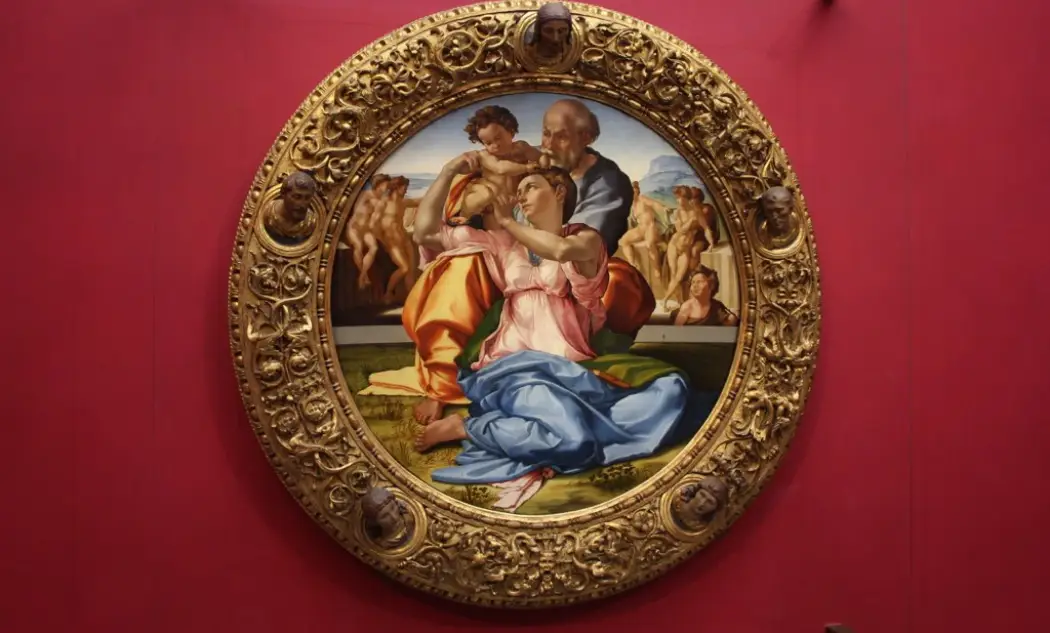
Artist: Michelangelo Buonarroti
Year: c. 1504–1506
Housed in the Uffizi, the Doni Tondo is Michelangelo’s only finished panel painting and the only one displayed in Florence. Commissioned by Agnolo Doni, it shows the Holy Family with young St. John the Baptist in a triangular composition. The figures are sculptural and dynamic, inspired by classical Greek statues. In the background, nude male figures reference discoveries like the Laocoön and Belvedere Apollo, reflecting Renaissance humanism and classical influence.
Medusa
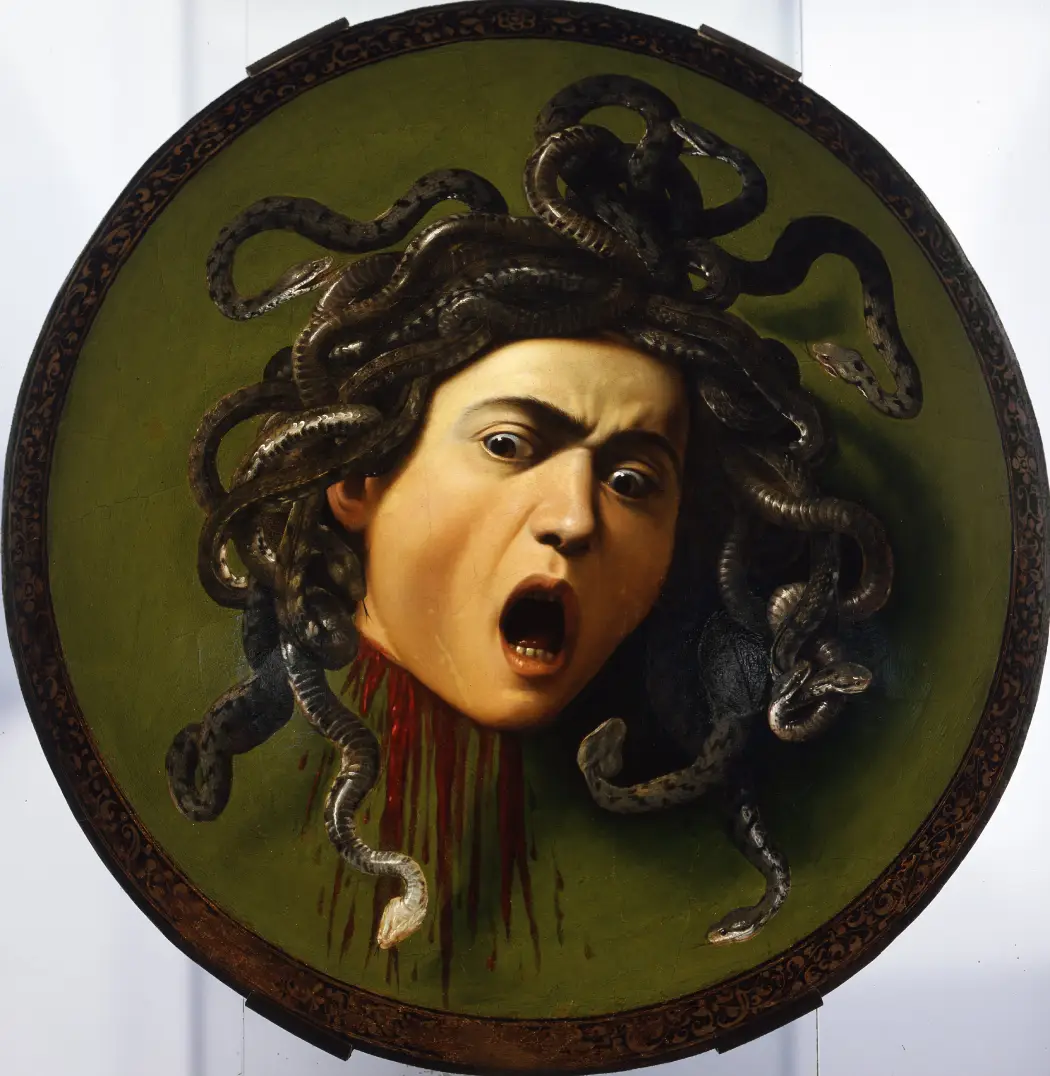
Artist: Caravaggio
Year: c. 1597
Housed in a dedicated room at the Uffizi, Caravaggio’s Medusa is a striking oil painting on a ceremonial wooden shield, created around 1597. Commissioned by Cardinal Del Monte for Grand Duke Ferdinando I de’ Medici, it symbolizes wisdom and prudence. Caravaggio’s dramatic use of chiaroscuro brings Medusa’s terrifying expression to life. In the same room, you can also see his Sacrifice of Isaac and Bacchus, both part of the Medici collection since 1608.
Portraits of the Duke and Duchess of Urbino
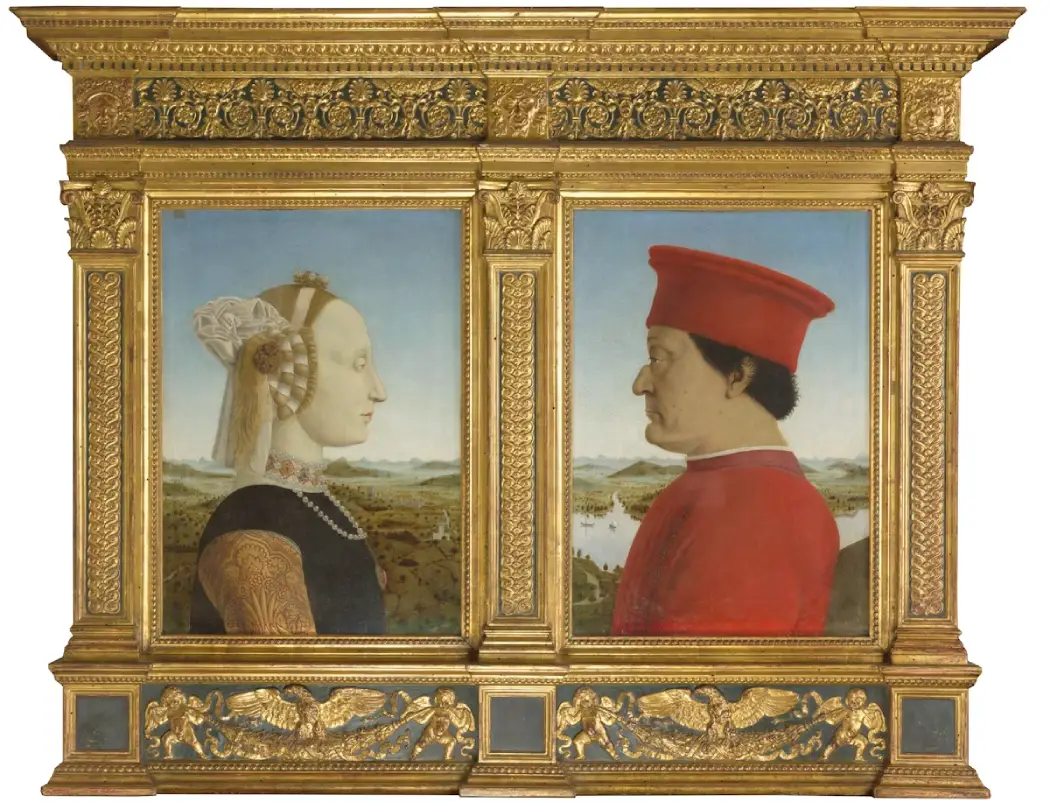
Artist: Piero della Francesca
Year: c. 1465–1475
This iconic double portrait by Piero della Francesca shows Federico da Montefeltro and Battista Sforza in strict profile, typical of 15th-century Italian portraiture. Behind them stretches a detailed landscape, adding depth and majesty. On the reverse, they ride in triumphal chariots, symbolizing virtue and status. Battista’s pale skin suggests a posthumous portrait, possibly from a death mask. Federico faces left, uniting him with his wife while hiding jousting injuries.
Madonna of the Goldfinch
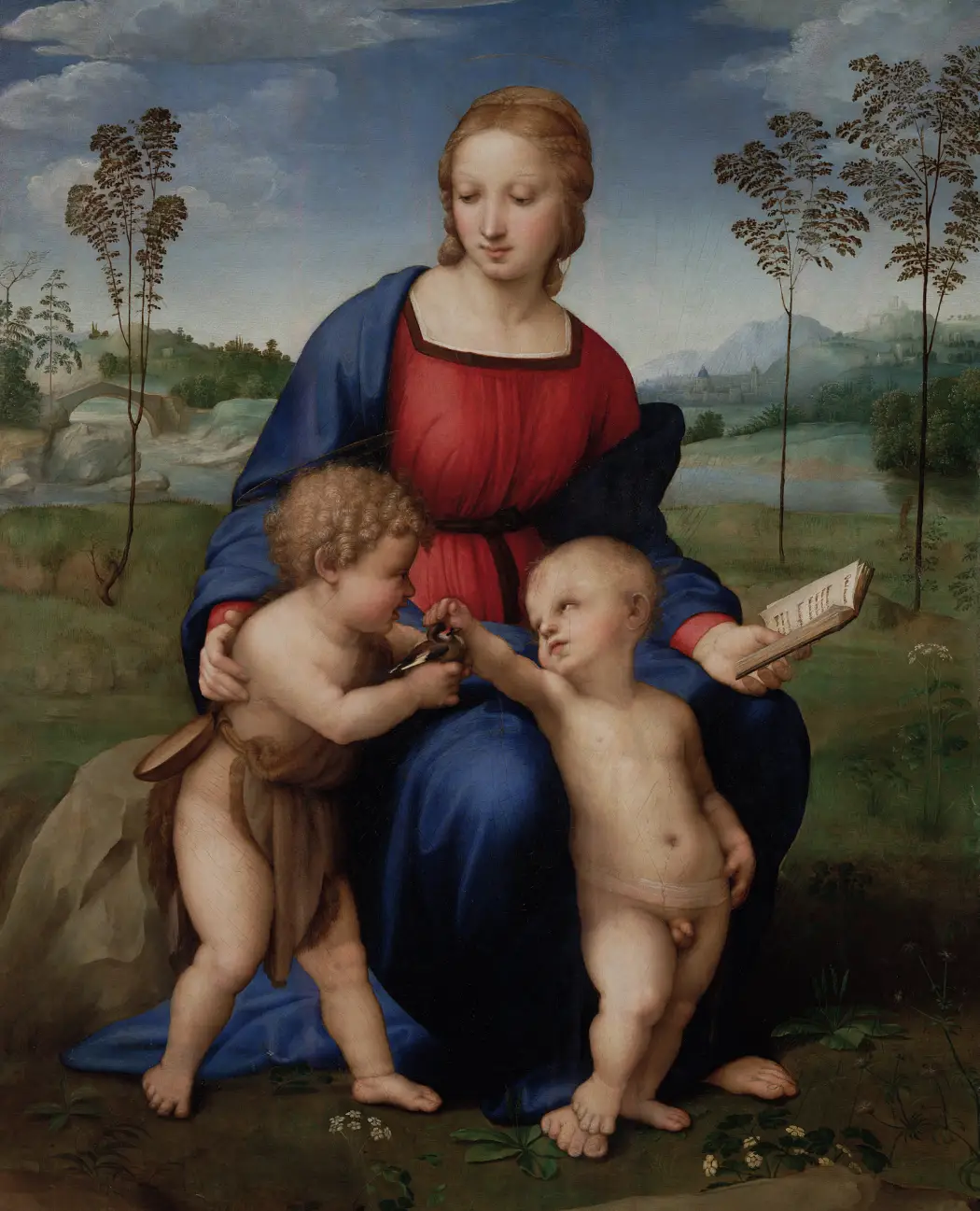
Artist: Raphael (Raffaello Sanzio)
Year: 1506
Painted during Raphael’s time in Florence, Madonna of the Goldfinch shows the Virgin Mary with the Christ child and young John the Baptist, who holds a goldfinch symbolizing Christ’s future suffering. The figures form a serene triangle in a natural setting, influenced by Leonardo and Michelangelo. Once a wedding gift, the painting was shattered in a 1547 earthquake and restored in 2008. It now hangs near Michelangelo’s Doni Tondo, offering a striking contrast. The Uffizi houses several other key works by Raphael.
Venus of Urbino
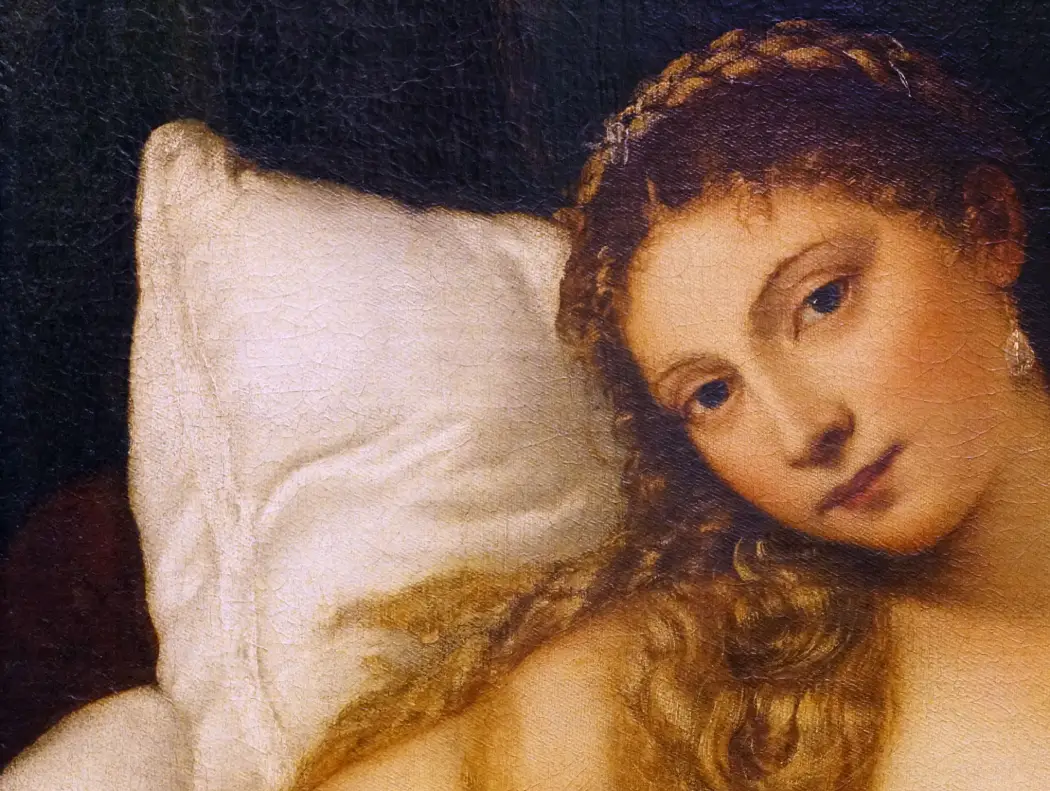
Artist: Titian (Tiziano Vecellio)
Year: 1538
Titian’s Venus of Urbino (1538) shows a young bride reclining in a lavish Venetian bedroom, preparing for the “il toccamano” ceremony—a gesture of marriage consent. Her calm gaze and relaxed pose exude intimacy and confidence. A small dog at her feet symbolizes fidelity, also seen in Titian’s Portrait of Eleonora Gonzaga. The soft glow of her skin and rich textures highlight Titian’s skill with light and form. The painting joined the Medici collection in 1631 as part of Vittoria della Rovere’s dowry.
Maestà di Ognissanti
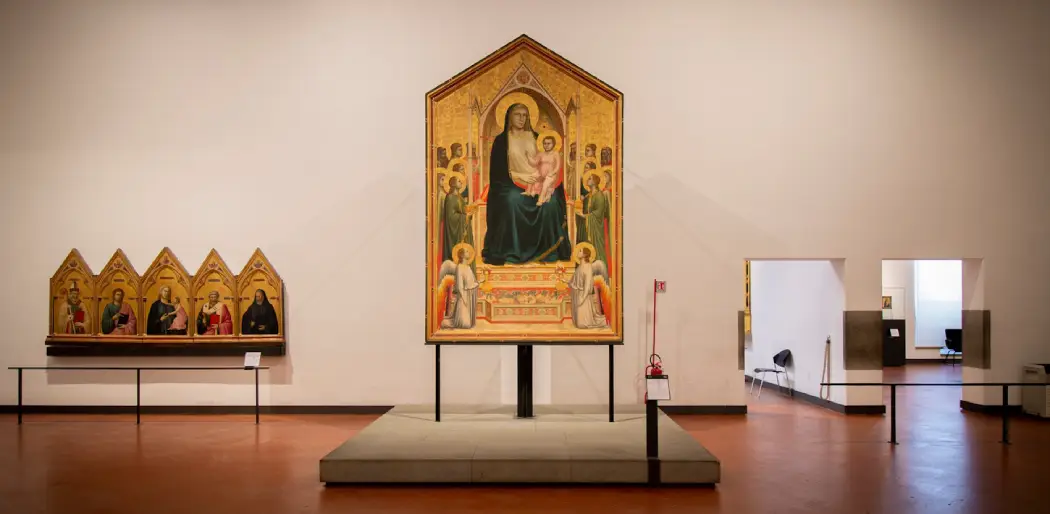
Artist: Giotto di Bondone
Year: c. 1300–1310
Giotto’s Ognissanti Madonna (c. 1300–1310) marks a key shift from medieval to Renaissance art. Painted for the Church of Ognissanti, it shows Mary enthroned with the Christ Child, surrounded by angels and saints. Moving beyond the flat Byzantine style, Giotto brought volume, depth, and realism to his figures. Jesus appears mature, blessing the viewer and holding a scroll of wisdom. With its symmetry and solid throne, the work became a model for future Florentine artists and signaled a new era of human-centered art.
Judith Beheading Holofernes
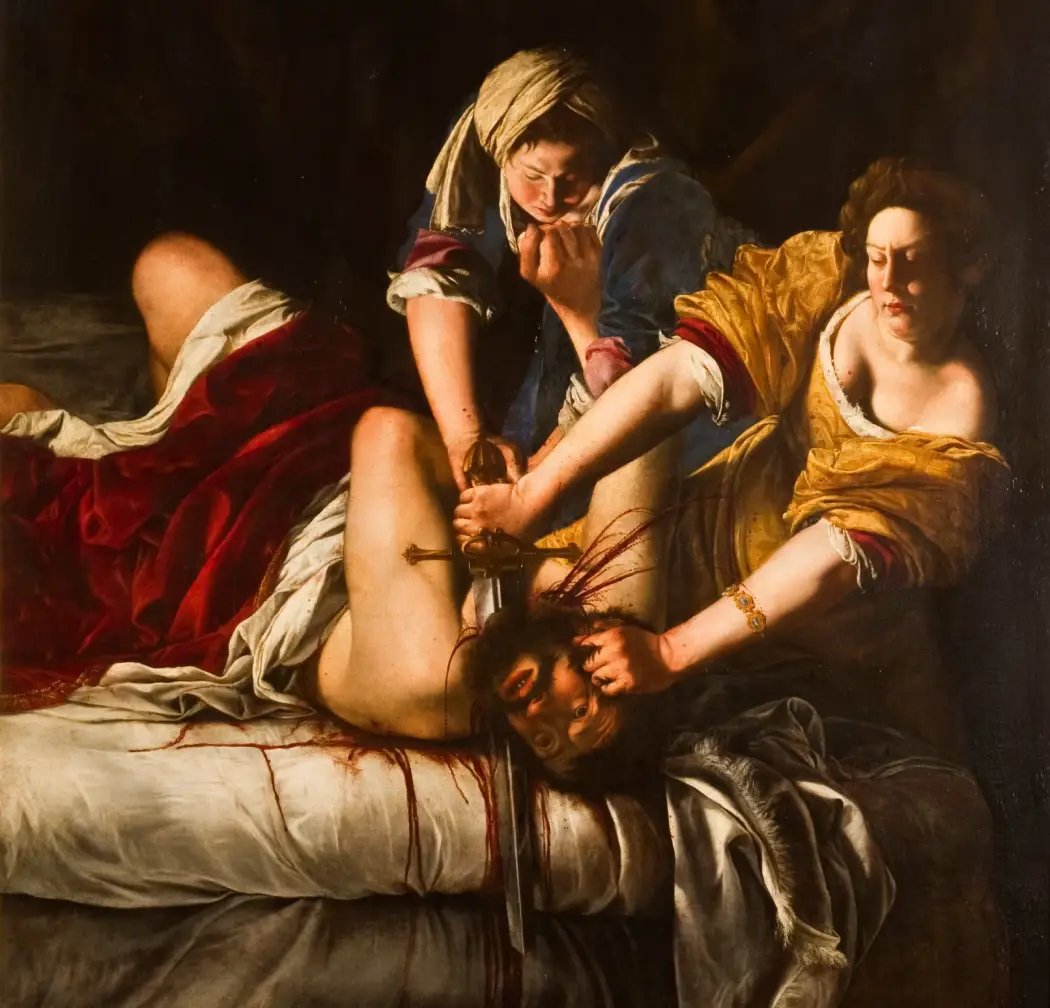
Artist: Artemisia Gentileschi
Year: c. 1620
Painted around 1620, Judith Slaying Holofernes by Artemisia Gentileschi is a powerful Baroque masterpiece. Influenced by Caravaggio, it shows Judith mid-decapitation of Holofernes with striking realism and drama. The scene is intense—blood spurts, and Judith is fierce and determined. Long deemed too graphic for display, it now stands as a bold symbol of Gentileschi’s talent and strength in a male-dominated world. She painted this subject multiple times, and this version is among her most iconic.
Annunciation by Simone Martini and Lippo Memmi
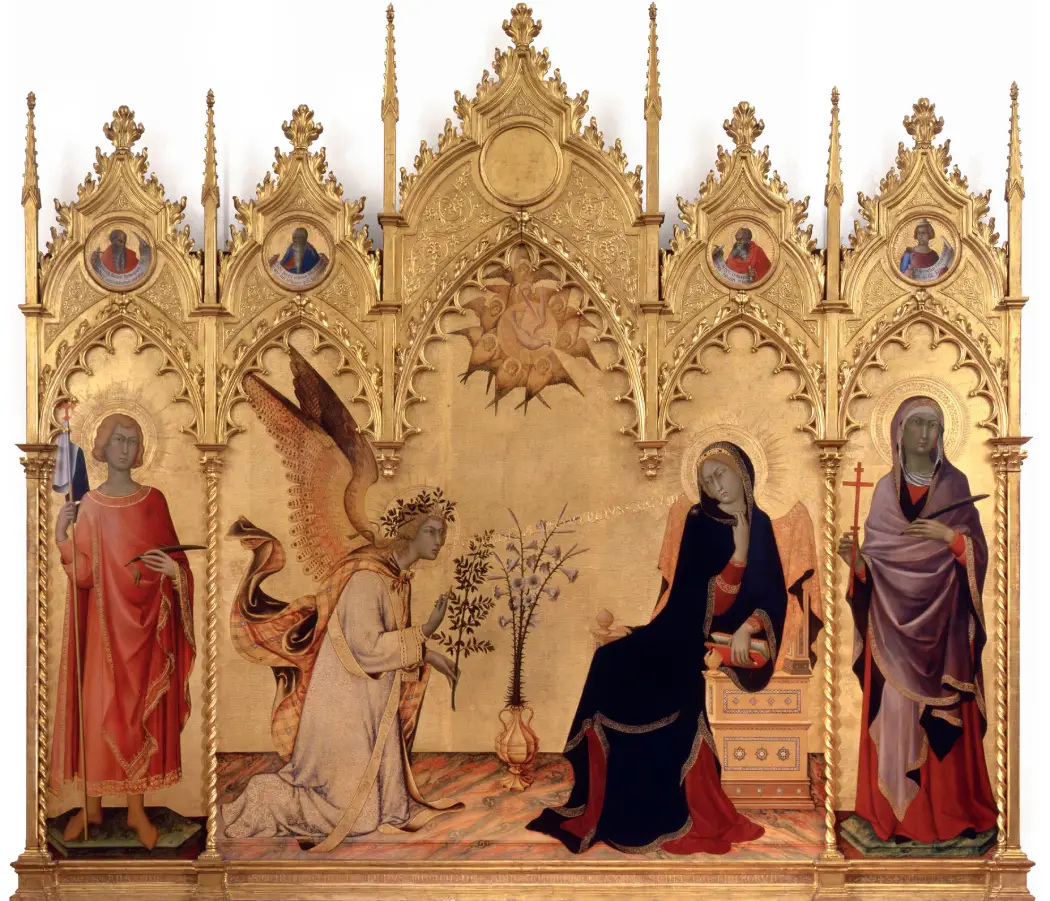
Artist: Simone Martini and Lippo Memmi
Year: c. 1333Painted around 1333 for a side altar in Siena Cathedral, The Annunciation by Simone Martini and Lippo Memmi is a Gothic masterpiece. Rich with gold leaf and fine tempera work, it shows Gabriel announcing to Mary she will bear Christ. Symbols like the olive branch, dove, and white lilies represent peace, the Holy Spirit, and purity. Gabriel’s fluttering cloak adds motion, while Mary recoils in surprise. A raised inscription reads, “Ave gratia plena dominus tecum.” The work is known for its elegance and refined detail.
